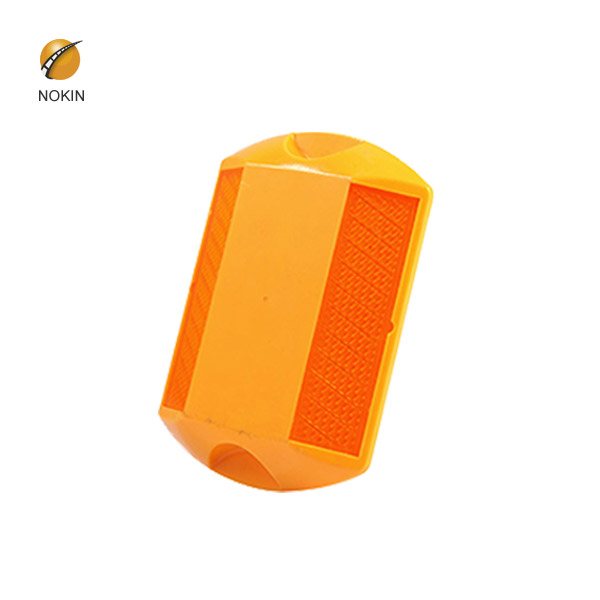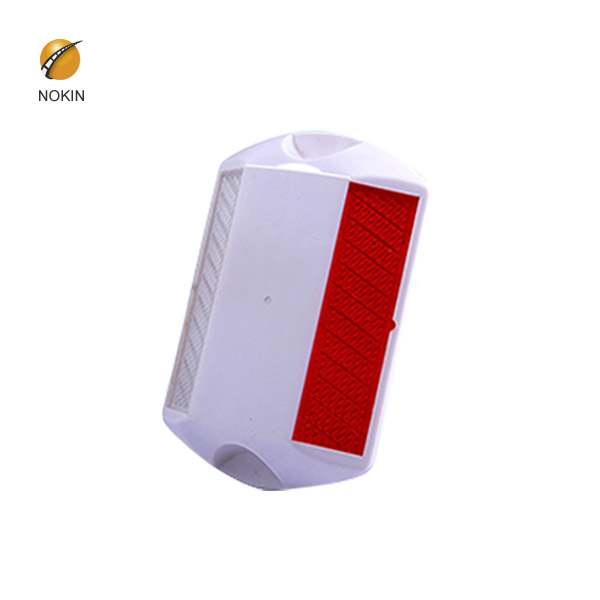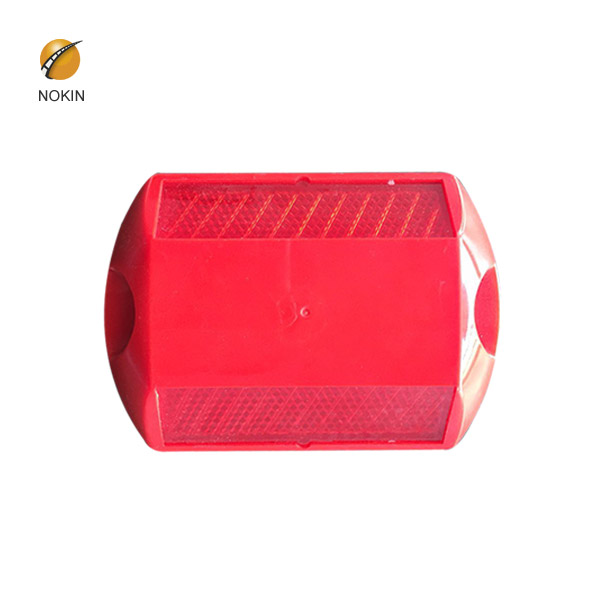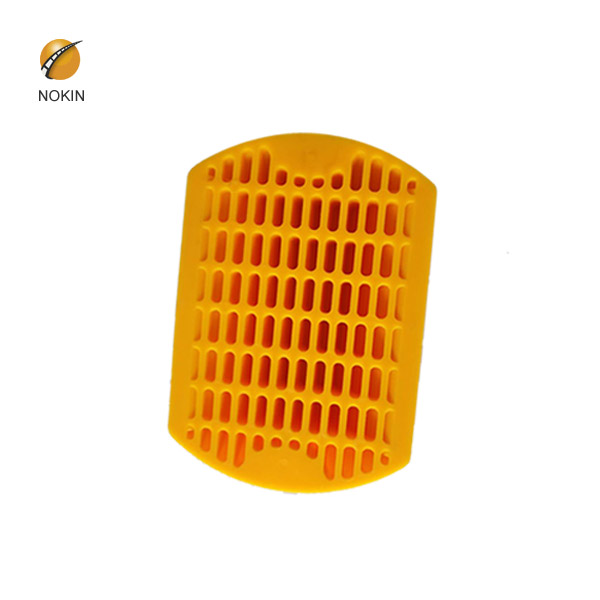



Reflective studs on motorway are safety devices used on roads. These devices are usually made of plastics, ceramics, thermoplastic coatings or occasionally metal, and come in a variety of shapes and colors. Reflective studs on motorway include lenses or reflective sheets, which enhance visibility by reflecting automobile headlights. Some other names for specific types of reflective studs include convex vibration lines, Botts' dots, contour lines, cat's eyes, road studs or road turtles. Sometimes they are simply referred to as "reflectors".
The specifications of Reflective studs on motorway:
| Body material | ABS |
| Size | 116*82*18mm |
| Lens Material | PMMA |
| Reflector type: | Double side/Single side |
| Color | Red, Yellow, Green, Blue, White |
| Packing | 50pcs/carton |
| Carton size | 38*36*23cm |
| Load capacity | 15Tons |

Home > Products > Reflective Road Stud > Raised Pavement Markers NK-1002 The advantages of our raised pavement markers on motorway are ASTM D4280 & EN 1463-1 standard; high reflectivity, fade resistance; special groove design to improve reflectivity and compression resistance; lowest cost, good adhesive ability and easy to be installed, making
Cat’s eyes colours. Red. motorway studs are placed along the hard shoulder of both motorways and dual carriageways. They can also be seen on the left of certain A or busy B roads. Amber. motorway studs are placed to the far right, running alongside the central reservation. Green
If using these on a private road or car park you will likely only require white reflectors, however, on the public highway, the position of different colours of studs is regulated tightly. White – These are the most commonly seen colour of stud reflector. White studs are situated on the centre line of a carriageway to separate lanes.
Nevertheless, the motorway is still the road-of-choice for commuters and holidaymakers alike. And with 21% of all British traffic riding these roads, tensions can be high. When it’s not people hogging the middle lane, you’ve got impatient drivers tailgating you for miles.
The “smart” road studs will change colour to keep drivers in the right lane, say Highways England.
Here am I happy in my work, a copy of Highway Construction Details Series D ‘Carriageway Markings for Rural Motorways’ in front of me. Life is good. Then I hear whispers of a myth, a legendblue road studs. I Wiki, I Google, I find reference to ‘police slip roads’ or cold temperatures, but nothing else. I now find myself on the edge!
Solar-powered road studs may be the future of road markings, and could even become a mandatory element of modern road safety. Our solar-powered road studs are available in a range of form factors, and can be supplied in different colours for different uses. Every project is different, and the road studs you choose will depend on a range of factors.
At Manchester Safety Services we stock a comprehensive selection of road cones in a variety of different colours – designed to offer increased guidance and support to your workforce. For a more comprehensive selection of all our products for construction sites and personal protection, visit our homepage, here , or call us now on 01706 364943.
There are five different kinds of motorway studs: white, amber, red, green and fluorescent green/yellow. The meaning of these studs are unchangeable so once you have learnt their meanings you can be confident of your position on the motorway.
3M™ Marker Series 290 road studs have been used on a 24km stretch of brand new motorway in Ireland, which opened in March 2010. The construction of a major inter-urban route connecting Dublin and Waterford is a key part of the Irish government’s strategy for economic growth and road safety improvements.
Jun 24, 2020 · Why are there different colour studs on the motorway? There are reflective studs on motorways to guide you when driving at night. You may hear them called by the far cuter name ‘Cat’s Eyes’. The different colours can help you recognise different road markings and maintain your lane discipline.
Oct 08, 2018 · We’ve installed 175 of the airport-runway-style LED road studs to help mark out lanes at one of England’s busiest motorway junctions – used by over 90,000 vehicles every day.
1.White reflective road studs mark the middle of the driveway or road. 2.Red mark the left edge of the road, indicating no traffic. 3. Amber reflective road studs mark the central reserve of a two-lane or highway. 4.Green color road stud mark the laying and branching at the edge of the main lane and the dividingline of the non-motorized vehicle
The maximum prescribed height for a depressible stud is 25 mm and for a non-depressible stud 20 mm (regulation 32). COLOUR OF ROAD STUDS . 6.9 Retroreflecting road studs are prescribed for use with reflectors coloured white, red, amber or green (regulation 31(7)). The colours are specified by chromaticity co-ordinates in BS EN 1463-1 and are
Red studs mark any line which should not be crossed by a vehicle. In practice, this is usually the left edge of the carriageway, as cars in the UK drive on the left-hand side of the road. Amber studs. Amber studs mark out an area which should not be crossed on the right-hand side of the road.